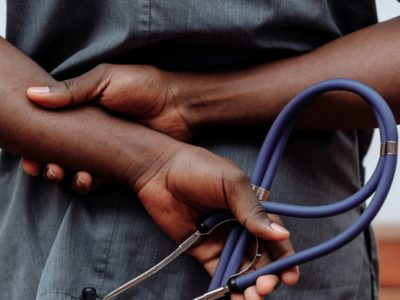According to the latest figures from the American Academy of Pediatrics, children under the age of nine make up just 0.00%-0.03% of all COVID-19-related deaths in the U.S.
While it’s extremely rare for children and infants to die of COVID-19 in the U.S., Brazil hasn’t been as fortunate. Recent outbreaks are putting patients of all ages at risk of severe disease. The current crisis in Brazil is changing our idea of how this virus can affect children all over the world.
Estimating the Number of Children That Have Died of COVID-19 in Brazil
Brazil is currently facing one of the worst outbreaks of any country since the start of the pandemic. The country now ranks second in the world when it comes to COVID-19-related deaths, just behind the U.S., but that’s not the full story. As the virus continues to spread, children are making up a disproportionate share of deaths compared to the U.S.
The country’s Ministry of Health reports that between February 2020 and March 15th, 2021, COVID-19 killed at least 852 children under the age of nine, including 518 babies before their first birthday.
Dr. Fatima Marinho, senior adviser to the international health NGO Vital Strategies, says the number is even higher due to systemic underreporting and a lack of COVID-19 testing. She researched the number of excess deaths caused by an unspecified acute respiratory syndrome and found that there were 10 times as many deaths this year compared to years previous.
Assuming these are in fact COVID-19 related, she estimates that the virus has killed 2,060 children under nine years old, including 1,302 babies.
Why Are So Many Babies at Risk?
Experts say the sheer number of cases in Brazil has been driving up infections across all age groups, including children.
Renato Kfouri, president of the Scientific Department of Immunisations of the Brazilian Society of Pediatrics, believes this could have been prevented. “Of course, the more cases we have and, as a result, the more hospitalizations, the greater the number of deaths in all age groups, including children. But if the pandemic were controlled, this scenario could evidently be minimized,” he said.
The rapid increase is also depleting the country’s healthcare system. ICU beds, ventilators, oxygen, and testing supplies have all become scarce in a country of 211 million people.
“We have a serious problem detecting cases. We don’t have enough tests for the general population, even fewer for children. Because there is a delay in the diagnosis, there is a delay in care for the child,” Dr. Marinho added.
Brazilian President Jair Bolsonaro has declined to shut down the country, even in the face of deadly outbreaks. The country has been cut off from its neighbors and allies as the virus continues to spread like wildfire. A new variant known as P.1, first discovered in northern Brazil, is also thought to be more contagious.
The upward trajectory shows no signs of slowing down. More than twice the number of people died last month than in any other month since the pandemic began.
The disease is also more difficult to detect in children. Dr. Marinho says providers in Brazil often misdiagnose the child’s symptoms until it’s too late.
“A child has a lot more diarrhea, a lot more abdominal pain, and chest pain, than the classic COVID picture. Because there is a delay in diagnosis, when the child arrives at the hospital they are in a serious condition and can end up complicating – and dying,” she said.
Widespread poverty, poor nutrition, and environmental factors may be to blame as well.
A recent study from the São Paolo School of Medicine looked at 5,857 Covid-19 patients under the age of 20 and found that comorbidities, such as diabetes, obesity, and asthma, as well as socioeconomic factors, can lead to worse outcomes of COVID-19 in children.
Overcrowding, poor hygiene, and lack of access to healthcare make it difficult to prevent disease. “Most vulnerable are black children, and those from very poor families, as they have the most difficulty accessing help. These are the children most at risk of death,” Dr. Marinho pointed out.
She also says the pandemic has crippled millions of Brazilian families financially. “We went from 7 million to 21 million people below the poverty line in one year. So people are also going hungry. All of this is impacting mortality.” Malnutrition depletes the body’s immune system, which can make children more susceptible to multi-system inflammatory syndrome (MIS). The condition can be prevented, but treatment tends to be much more successful if it’s diagnosed early.
Most of the children who have died of COVID-19 had comorbidities at the time, but that’s not always the case.
Jessika Ricarte lost her infant son Lucas to COVID-19 after a delay in treatment led to a late diagnosis. “Lucas had several inflammations, 70% of the lung was compromised, the heart increased by 40%. It was a situation that could have been avoided. The earlier he would have received specialized care, the better,” she said. “He arrived at the hospital already critically ill. I believe he could have had a different outcome if we could have treated him earlier.”
Now, she’s reaching out to other mothers, so they can spot the signs before it’s too late. “Every child I know was saved by some warning and the mother says: ‘I saw your posts, I took my son to the hospital and he is now at home.’ It’s as if it were a little bit of Lucas,” she says.
Protecting Children from COVID-19
It’s important to remember that children, including infants, aren’t immune to serious disease as a result of COVID-19. Experts say be on the lookout for these early warning signs that something is wrong:
- Looks pale, mottled, and feels abnormally cold to the touch
- Pauses in their breathing (apnoeas), has an irregular breathing pattern, or starts grunting
- Severe difficulty in breathing, becoming agitated or unresponsive
- Goes blue around the lips
- Experiences a fit/seizure
- Becomes distressed (crying inconsolably despite distraction), confused, very lethargic, or unresponsive (difficult to wake)
- Has a rash that does not disappear with pressure
Losing a child to COVID-19 is heartbreaking, especially when the outcome could have been avoided. We will likely see more children die of the disease until Brazil gets the pandemic under control.

















